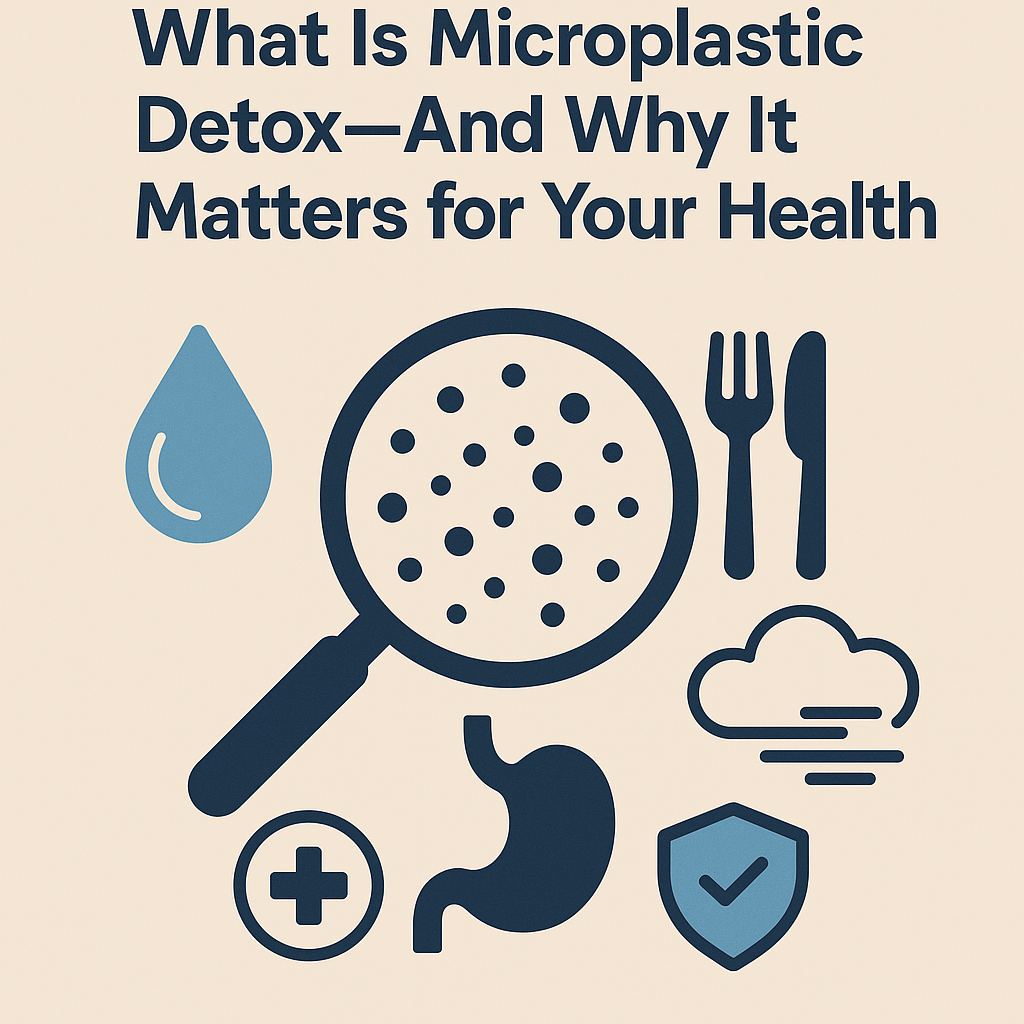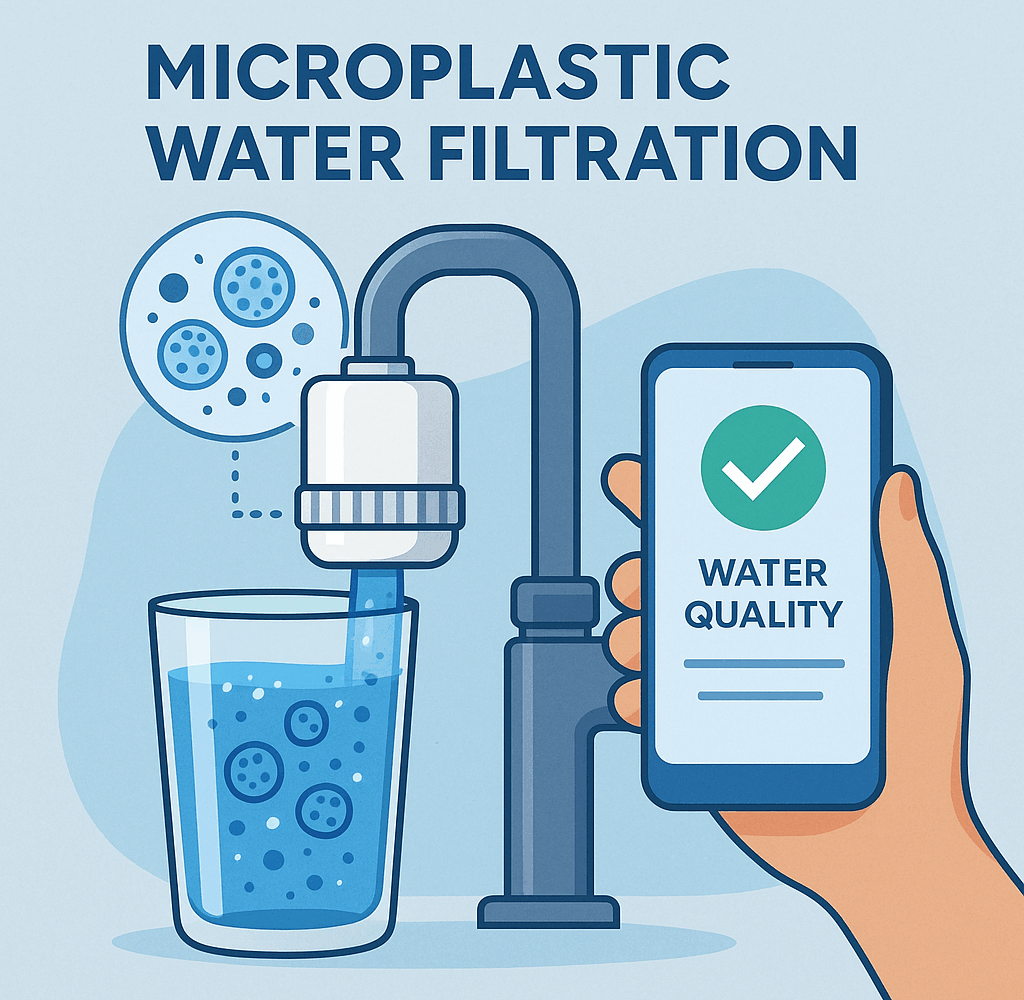Microplastics have become an unavoidable part of our daily lives, found in the water we drink, the food we consume, and even the air we breathe. These tiny plastic particles pose a significant threat to our health, affecting our hormones, immune system, and digestive functions. However, instead of being overwhelmed by the presence of microplastics, smart technology offers practical solutions like microplastic water filtration for removing them from our environment.
In this article, we will explore how microplastic water filtration technologies help protect your health by providing easy-to-use tools that eliminate microplastics from your daily routine. From water filters to self-cleaning bottles, technology is now making it possible to safeguard yourself from these harmful particles, ensuring that you live a cleaner, healthier life.
What Is Microplastic Detox—And Why It Matters for Your Health

Microplastics are tiny plastic particles—often invisible to the eye—that now exist in the water we drink, the food we eat, and even the air we breathe. These particles come from broken-down plastic waste, synthetic fabrics, and packaging materials used every day.
Once inside the body, microplastics can disrupt hormone balance, weaken immune response, and irritate the digestive system. Studies have found traces of microplastics in human blood, lungs, and even the placenta. Their presence isn’t just an environmental issue—it’s a personal health concern.
According to a 2019 report by the World Health Organization, microplastics were found in drinking water samples globally, raising questions about long-term health effects. A follow-up 2022 WHO report emphasized the urgent need for more data and called for advanced filtration technologies.
That’s where microplastic water filtration and other smart detox technologies come in. Removing these particles from your daily life isn’t just good for the planet—it’s essential for protecting your long-term health.
Smart Technologies for Microplastic Water Filtration That Help Remove Microplastics from Your Life
Smart Water Filters for Microplastic Water Filtration: Your First Line of Defense
Microplastic water filtration is crucial for ensuring clean drinking water, and smart water filters are an effective solution. Filters like TAPP Water and Hydroviv remove harmful particles, including microplastic filter and other contaminants. These systems use advanced technologies, such as activated carbon and reverse osmosis, to capture microplastics, ensuring the water you drink is free from harmful substances.
By using these advanced filters, you can protect your health by reducing your exposure to microplastics.
UV-C Self-Cleaning Bottles Like LARQ:
UV-C self-cleaning bottles, such as the LARQ bottle, use ultraviolet light to purify the water inside. These bottles are equipped with a UV-C light cap that activates every 2 hours to kill up to 99.99% of harmful bacteria and viruses. In addition to this, the UV-C technology also helps in breaking down small microplastic particles, ensuring that you drink clean water.
The cleaning process is swift and efficient. Once the bottle is sealed, the UV-C light initiates its cleaning cycle, ensuring that the water is not only free from microbial contaminants but also from microplastics that may be present.
According to a 2021 study by the National Institutes of Health, UV-C light has proven to be effective in disinfecting surfaces and liquids, including microplastic contamination. This makes UV-C self-cleaning bottles a crucial tool in daily life for those seeking to reduce exposure to harmful particles like microplastics.
Shower Head Filters with Microplastic Removal:
Smart shower head filters are gaining traction as a crucial layer of protection against microplastic exposure. These filters use ultra-fine mesh or activated carbon to capture microscopic plastic particles directly from your shower water. Some models also include multi-stage filtration systems that trap sediments, heavy metals, and microplastics filter elements—ensuring cleaner water flows over your skin.
More importantly, these devices help reduce the risk of microplastic absorption through the skin. While the skin isn’t as permeable as the digestive system, repeated exposure to contaminated water could still pose long-term health risks. That’s why installing a microplastic filter in your shower isn’t about hygiene—it’s about health.
In addition, many smart shower heads now connect to mobile apps, letting users monitor water quality, cartridge lifespan, and filtration performance in real time. This gives you better control over your environment and peace of mind every time you step underwater.
At-Home Water Testing Kits:
Smart water testing kits make it easier than ever to understand what’s in your drinking water. Devices like SimpleWater Tap Score provide detailed lab reports that test for hundreds of contaminants, including emerging concerns like microplastics.
These kits work by having you collect a water sample at home and send it to a certified lab. The results give you a breakdown of what’s inside, helping you detect harmful particles early. While not all kits specifically detect microplastics, some high-level services now include or plan to include this option as awareness grows.
Using a testing kit lets you take control of your water quality. It also helps you decide whether you need microplastic water filtration systems at home. This step, often overlooked, is crucial for long-term health.
Washing Machine Filters to Trap Microfibers:
Smart filters, such as PlanetCare and Filtrol, are designed to be installed in washing machines. These filters play a crucial role in trapping microfibers that are released from synthetic fabrics during the washing process. Microfibers, which are tiny plastic particles, can easily pass through regular washing machine filters and end up in the water supply.
By using these advanced filters, the release of harmful microplastics into the environment is significantly reduced. PlanetCare and Filtrol are designed to catch microfibers and prevent them from entering the water system, thus limiting pollution.
These filters also contribute to the overall sustainability of household laundry practices. They not only protect the environment but also ensure that harmful particles do not contaminate water sources, reducing the potential health risks posed by microplastics.
By adopting these technologies, consumers can contribute to a cleaner planet while ensuring that their water remains free from harmful contaminants.
A 2021 study published in Frontiers in Marine Science found that washing machine filters can significantly reduce microfiber emissions, further supporting the effectiveness of these devices in protecting the environment and public health. For more details, check out the full study here.
The Link Between Technology and Your Long-Term Health

The tools and technologies discussed here do more than just protect the environment—they also have a direct impact on your health. Microplastics, once introduced into the body, can disrupt hormonal balance, weaken the immune system, and affect the digestive system. These tiny particles, often invisible to the eye, are found in everything from drinking water to food, and even the air we breathe.
To view the full study, you can visit the following link:Marine Microplastics and Infant Health – arXiv
Given their widespread presence, the solution isn’t just environmental protection—it’s about safeguarding human health daily. Technologies like smart water filters and UV-C self-cleaning bottles offer practical, immediate ways to remove microplastics from your life. These tools reduce the exposure to harmful microplastics, thus minimizing the potential long-term health risks that come with constant exposure.
Microplastic removal is a daily, actionable goal. The smart filtration systems, integrated into your everyday routine, ensure that you’re actively protecting both the environment and your body. With advanced technologies, the path to health and environmental responsibility is clear and accessible.
The Future of Health and Environment: How Microplastic Water Filtration Can Make a Difference
Microplastics are a real and growing problem, but solutions are already available. With the right tools, such as microplastic filters and microplastic water filtration systems, you can take control of your health and protect the environment. These smart technologies provide daily protection without complexity, ensuring that harmful particles are removed from your water, air, and even your home.
By incorporating these advanced solutions into your routine, you are not just safeguarding your own health but also contributing to a cleaner planet. Technology today offers an accessible and efficient way to combat the microplastic crisis. Let technology be your ally in achieving better health and a cleaner life.
Emerging technologies like nano filtration devices and artificial intelligence for real-time water quality monitoring are set to revolutionize microplastic removal. These advancements will enable more efficient filtration and enhance the protection of both human health and the environment.
We’ve explored practical tech solutions to reduce microplastic exposure. But what’s next?
As AI continues to shape our daily lives, can it also play a role in solving environmental issues like microplastic pollution?
Take 10 seconds to vote in our LinkedIn poll and tell us what you think. Your opinion could help shape smarter solutions.
Frequently Asked Questions About Microplastic Water Filtration
-
How to flush microplastics out of your body?
Currently, there is no scientifically proven method to completely remove microplastics from the human body. Supporting your body's health through a diet rich in fiber and antioxidants may help natural detoxification processes. Reducing exposure by drinking filtered water and avoiding plastic packaging can also help minimize microplastic intake.
-
Is it possible to filter microplastics out of water?
Yes, microplastics can be filtered out of water using advanced technologies such as reverse osmosis (RO), ultrafiltration, and activated carbon filters, which effectively capture microplastic particles.
-
Do water filters remove microplastics?
Some advanced filters, like reverse osmosis and ultrafiltration systems, effectively remove microplastics. Regular filters, such as basic carbon or pitcher filters, are generally less effective because their pore sizes are larger than microplastic particles.
-
Filters that remove microplastics
The best filters for removing microplastics are reverse osmosis and ultrafiltration filters because they have very fine pores that capture microplastic particles. Activated carbon filters can help reduce some contaminants but are less effective at removing microplastics.







